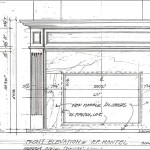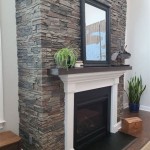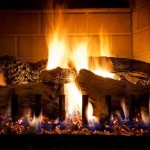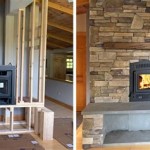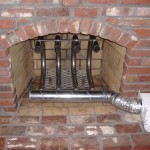Painting A Stone Fireplace Gray: A Comprehensive Guide
Painting a stone fireplace is a significant undertaking that can dramatically alter the aesthetic of a room. While natural stone fireplaces often possess inherent beauty, homeowner preferences evolve, and a gray painted finish can offer a more modern, sophisticated, or simply more compatible look with existing décor. This article provides a comprehensive guide to painting a stone fireplace gray, covering preparation, material selection, application techniques, and considerations for different stone types.
The decision to paint a stone fireplace should not be taken lightly. Once paint is applied, reversing the process and returning the stone to its original state can be extremely difficult and time-consuming. Careful consideration should be given to the potential impact on resale value, as some buyers may prefer the natural look of stone. It's advisable to consult with a design professional, particularly if the fireplace is a historically significant feature of the home.
Before embarking on the painting project, it's crucial to understand the different types of stone commonly used in fireplaces. Fieldstone, river rock, brick, and manufactured stone veneers each possess unique characteristics that will influence the painting process. For example, porous stones like fieldstone will require more primer and paint than smoother stones like slate. Furthermore, the texture of the stone plays a vital role in the final painted appearance. Deeply textured stones will accentuate the variations in the gray paint finish, while smoother surfaces will provide a more uniform look.
Key Point 1: Preparation is Paramount
Proper preparation is the cornerstone of any successful painting project, especially when dealing with a porous and often uneven surface like stone. Neglecting this step can lead to poor adhesion, uneven coverage, and a less-than-desirable final result. The preparation process involves cleaning, repairing, and priming the stone surface.
Cleaning: Thorough cleaning is essential to remove dirt, soot, grease, and any other contaminants that could interfere with paint adhesion. Begin by dry brushing the fireplace with a stiff-bristled brush to remove loose debris. Next, wash the stone with a mixture of trisodium phosphate (TSP) and water, following the manufacturer's instructions carefully. TSP is a powerful cleaner that effectively cuts through grease and grime. For heavily soiled areas, allow the TSP solution to dwell on the surface for several minutes before scrubbing. Rinse the fireplace thoroughly with clean water to remove all traces of TSP. Allow the fireplace to dry completely for at least 24 hours before proceeding.
Repairing: Inspect the stone fireplace for any cracks, chips, or loose mortar joints. Repair these imperfections before painting, as they will become more noticeable once the paint is applied. Use a masonry patching compound or mortar to fill cracks and chips. Apply the compound according to the manufacturer's instructions, ensuring that it is flush with the surrounding stone. For loose mortar joints, remove the old mortar with a chisel and hammer and replace it with fresh mortar. Allow the patching compound and mortar to cure completely before painting.
Priming: Priming is a critical step in painting a stone fireplace. Primer seals the porous surface of the stone, creating a uniform base for the paint to adhere to. Choose a high-quality masonry primer specifically designed for use on stone or brick. Apply the primer evenly to the entire surface of the fireplace, using a brush, roller, or sprayer. Pay particular attention to crevices and corners, ensuring that all areas are thoroughly coated. Allow the primer to dry completely according to the manufacturer's instructions. Multiple coats of primer may be necessary, particularly on highly porous stones like fieldstone.
Key Point 2: Selecting the Right Materials
Choosing the right materials is just as important as proper preparation. The type of paint, primer, and application tools will significantly impact the durability and appearance of the finished product. Investing in high-quality materials will ensure a longer-lasting and more aesthetically pleasing result.
Primer: As mentioned earlier, a high-quality masonry primer is essential. Look for a primer that is specifically formulated for use on stone or brick and that is resistant to alkali and efflorescence. Alkali is a corrosive substance that can leach out of masonry and damage paint. Efflorescence is a white, powdery deposit that can form on the surface of masonry due to moisture. A primer that is resistant to these substances will help protect the paint from damage and ensure a longer-lasting finish.
Paint: Choose a high-quality acrylic latex paint that is specifically designed for use on masonry. Acrylic latex paints are durable, water-resistant, and easy to clean. Avoid using oil-based paints, as they can become brittle and crack over time. Select a paint with a matte or eggshell finish, as these finishes are less likely to highlight imperfections in the stone surface. The specific shade of gray is a matter of personal preference. Consider the existing décor of the room and choose a gray that complements the overall color scheme. Sample pots are invaluable for testing the color in different lighting conditions within the room.
Application Tools: The choice of application tools depends on the texture of the stone and the desired finish. For smooth stones, a paint roller with a nap length appropriate for the surface can be used. For textured stones, a brush is typically the better choice. Use a high-quality synthetic brush with angled bristles to reach into crevices and corners. A paint sprayer can also be used to apply primer and paint to stone fireplaces, particularly those with intricate details. However, sprayers require practice and careful masking to avoid overspray.
Safety Gear: Always wear appropriate safety gear when painting. This includes safety glasses, gloves, and a respirator mask to protect against fumes and dust. Ensure adequate ventilation in the work area by opening windows and doors or using a fan.
Key Point 3: Application Techniques for Optimal Results
Proper application techniques are crucial for achieving a smooth, even, and durable paint finish on a stone fireplace. The application process involves applying the primer, followed by multiple coats of paint, allowing each coat to dry completely before applying the next.
Primer Application: Apply the primer evenly to the entire surface of the fireplace, using the chosen application tool. Start with the crevices and corners, working your way to the larger, flatter areas. Ensure that all areas are thoroughly coated, and avoid applying the primer too thickly, as this can lead to drips and runs. Allow the primer to dry completely according to the manufacturer's instructions.
Paint Application: Once the primer is dry, apply the first coat of paint. Use the same application techniques as with the primer, starting with the crevices and corners and working your way to the larger areas. Apply the paint in thin, even coats, avoiding drips and runs. Allow the first coat of paint to dry completely according to the manufacturer's instructions. This may take several hours or even overnight, depending on the temperature and humidity.
Subsequent Coats: Apply a second coat of paint, using the same techniques as with the first coat. Again, apply the paint in thin, even coats, and avoid drips and runs. For a more durable and uniform finish, a third coat of paint may be necessary, particularly on highly porous stones or if the desired color is significantly different from the original stone color. Allow each coat of paint to dry completely before applying the next.
Curing Time: After the final coat of paint has been applied, allow the fireplace to cure completely before using it. Curing time allows the paint to fully harden and adhere to the stone surface. The manufacturer's instructions will specify the recommended curing time, which is typically several days. Avoid placing any objects on the fireplace during the curing period.
Touch-Ups: After the paint has cured, inspect the fireplace for any imperfections or areas that need touch-up. Use a small brush to apply touch-up paint to these areas, blending them carefully with the surrounding paint. Allow the touch-up paint to dry completely before using the fireplace.
In summary, painting a stone fireplace gray requires meticulous preparation, careful material selection, and precise application techniques. By following these guidelines, homeowners can successfully transform their fireplace into a stunning focal point that complements their modern aesthetic. Remember that patience and attention to detail are paramount for achieving a professional-looking and long-lasting result. Furthermore, always prioritize safety by wearing appropriate protective gear and ensuring adequate ventilation throughout the painting process.

Painted Stone Fireplace Makeover The Inspired Room

Painted Stone Fireplace Makeover The Little By Home

How To Easily Paint A Stone Fireplace Charcoal Grey Makeover Dans Le Lakehouse Painted

How To Paint A Stone Fireplace
How To Paint A Stone Fireplace Painting Guide Brick Anew

Ehow How To S Articles More Discover The Expert In You Fireplace Remodel Painted Rock Fireplaces Stone

See How I Made Over An Ugly Clunky Stone Veneer Fireplace With Paint

How To Easily Paint A Stone Fireplace Charcoal Grey Makeover Dans Le Lakehouse

How To Paint A Stone Fireplace An Easy Diy Project Allisa Jacobs

Painted Stone Fireplace Makeover The Inspired Room


